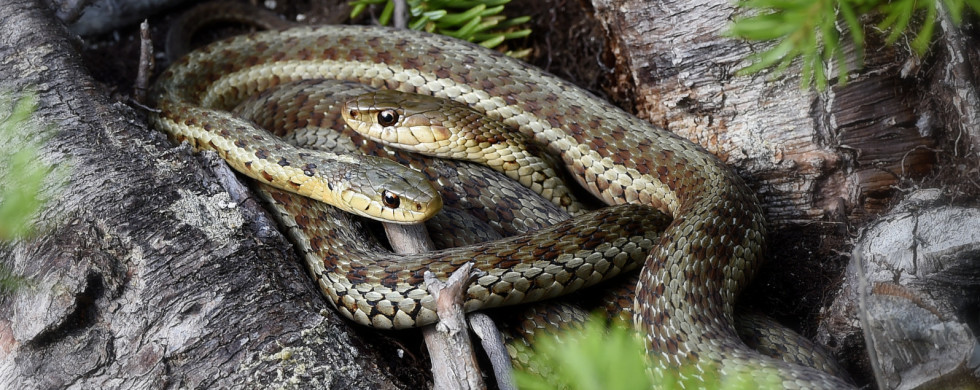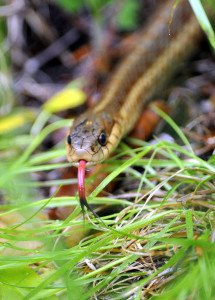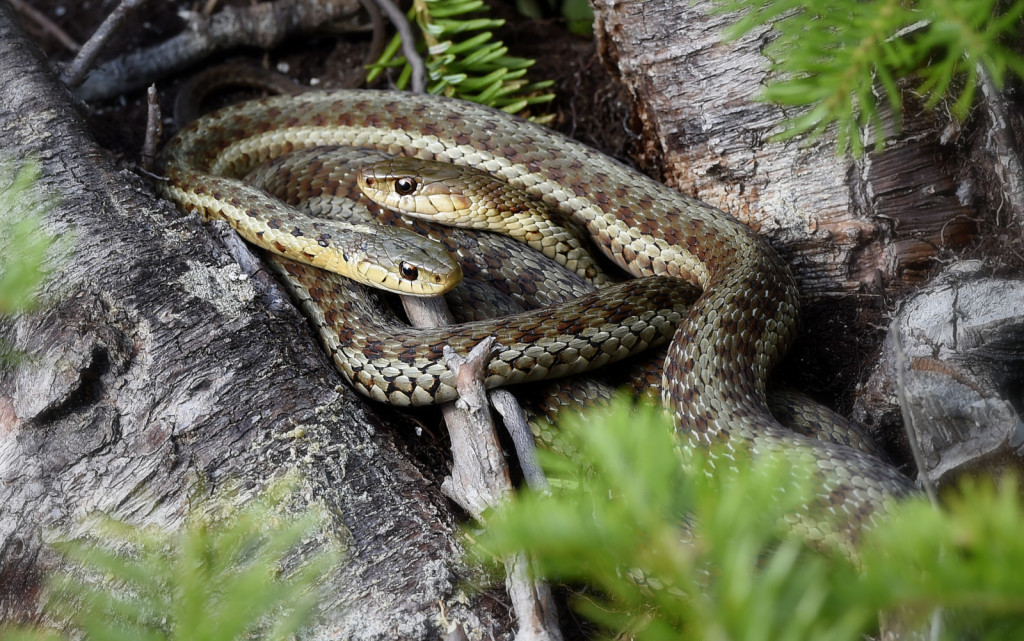
31
2016A Snake!
Shot of the Month – August 2016
Snakes tend not to be a crowd favorite but nature’s beauty comes in many sizes and shapes. Ok, while these Common Garter Snakes (CGS), photographed in Baxter State Park in Maine are not adorable, nor cuddly, I think that they do have a certain charisma and geometric charm about them.
If you get out in the woods, even a little bit, there is a good chance that you have seen a garter snake. They are by far the most common snake in North America and can be found from Canada to Florida, from the Pacific to the Atlantic coast, and most places in between. The CGS is quite adaptable and can live in forests, fields, prairies, streams, wetlands, meadows, marshes, and ponds – it is often found near water. These snakes are quite harmless though some species of garter snake have a mild neurotoxic venom that may help to immobilize its prey, but its bite is harmless to humans.
Common garter snakes are thin and tend to be about 22 inches in length and rarely get longer than four feet in length. Given their relative small size the CGS is often preyed upon by large fish, hawks, crows, bears, turtles, birds, foxes, squirrels, raccoons, bullfrogs, and some other snakes.
I know that some people get very afraid when they see a snake. Trust me, this fellow is not a threat. His main prey is, are you ready for this? – earthworms. Yep, this snake is a viscous killer of,  earthworms. See, now don’t you feel a bit silly? CGS are also very good swimmers and will hunt small fish, frogs, tadpoles, leeches, insects, slugs, and crayfish. They will also hunt for small mammals and birds when possible.
earthworms. See, now don’t you feel a bit silly? CGS are also very good swimmers and will hunt small fish, frogs, tadpoles, leeches, insects, slugs, and crayfish. They will also hunt for small mammals and birds when possible.
From the photo, you might deduce that all CGS are small, brown, striped snakes. Alas, life is not that simple. Turns out that there is tremendous variability in the appearance of the CGS and you may find them adorned in green, blue, yellow, gold, red, orange, brown (as above), and black. The CGS is just one out of thirty species of garter snakes that exist, not to mention the various sub-species, so figuring out which is which can be tricky. Check local reference guides for the state where you saw the snake for more precision on the colors typically found there.
So the next time you are in the woods and you see one of these fellas, take a deep breath, relax, and enjoy one of nature’s lesser-appreciated beauties.
Until next month…..m
Nikon D4S, Nikon 70-200mm @ 200mm, f/11, 1/60 s, ISO 400

